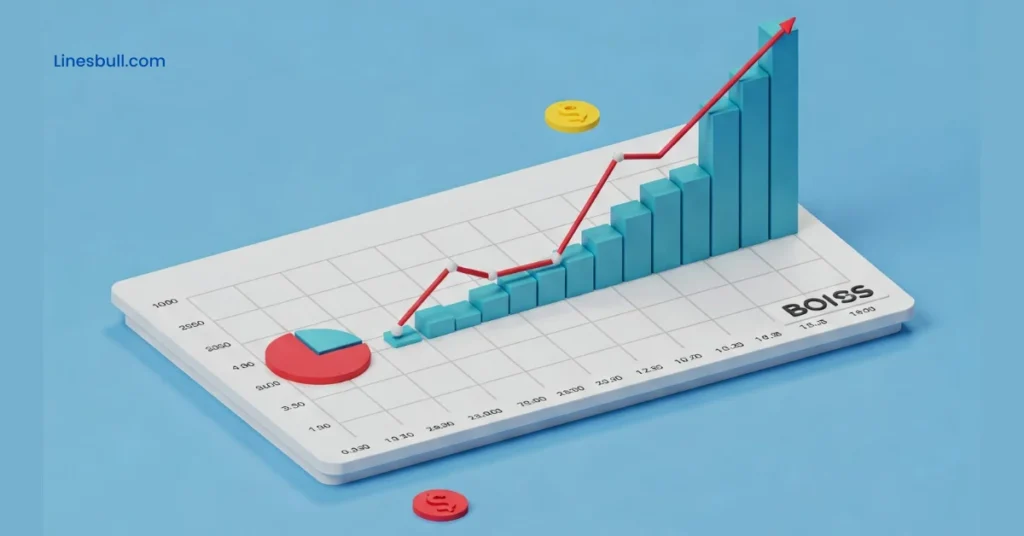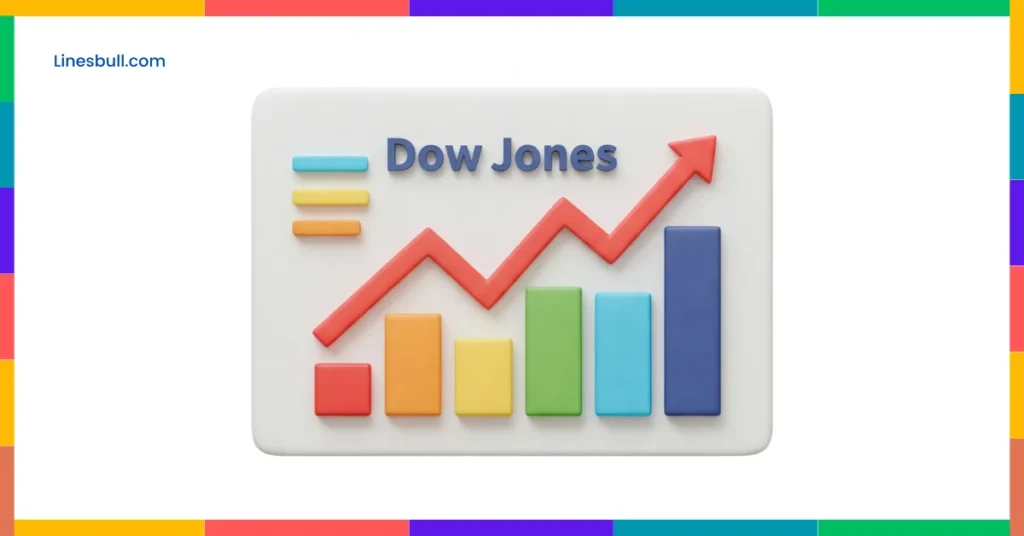The financial markets are a complex ecosystem, with various instruments designed to cater to different investment strategies and risk appetites. Among these, Dow Jones Stock Market Futures stand out as a pivotal tool for investors aiming to hedge risks or speculate on market movements. This comprehensive guide delves into the intricacies of Dow Jones Futures, offering insights into their mechanics, benefits, and strategies for effective engagement.
What Are Dow Jones Stock Market Futures?
Dow Jones Stock Market Futures are contracts that allow traders and investors to speculate on the future price movements of the Dow Jones Industrial Average (DJIA). These futures contracts are widely used to hedge against market risks, predict trends, and profit from price fluctuations in the stock market.
The Dow Jones Industrial Average (DJIA) has experienced significant growth over the past century, reflecting the dynamic nature of the U.S. economy and global financial markets. Below is a table highlighting the DJIA’s closing values at the end of each decade, along with the net change and percentage change from the previous decade:
| Year | Closing Value | Net Change | Percentage Change |
|---|---|---|---|
| 1900 | 70.71 | — | — |
| 1910 | 81.36 | +10.65 | +15.06% |
| 1920 | 71.95 | -9.41 | -11.57% |
| 1930 | 164.58 | +92.63 | +128.77% |
| 1940 | 131.13 | -33.45 | -20.33% |
| 1950 | 235.41 | +104.28 | +79.52% |
| 1960 | 615.89 | +380.48 | +161.64% |
| 1970 | 838.92 | +223.03 | +36.21% |
| 1980 | 963.99 | +125.07 | +14.91% |
| 1990 | 2,633.66 | +1,669.67 | +173.21% |
| 2000 | 10,786.85 | +8,153.19 | +309.55% |
| 2010 | 11,577.51 | +790.66 | +7.33% |
| 2020 | 30,606.48 | +19,028.97 | +164.36% |
| 2024 | 42,544.22 | +11,937.74 | +39.00% |
The Mechanics of Dow Jones Futures
Understanding the operational framework of Dow Jones Stock Market Futures is crucial for effective participation. Here’s a breakdown of their key components:
Contract Specifications
- Underlying Asset: The DJIA, comprising 30 prominent U.S. companies.
- Contract Size: Typically, each contract represents a specific monetary value multiplied by the index level. For instance, the E-mini Dow Futures contract has a $5 multiplier.
- Tick Size: The minimum price movement, often set at one index point, equating to a $5 change per contract.
- Trading Hours: Nearly 24-hour trading is facilitated through electronic platforms like the CME Globex, allowing for continuous market participation.
Margin Requirements
Trading futures involves margin accounts, where traders deposit a fraction of the contract’s value as collateral. This margin acts as a security buffer against potential losses. It’s essential to monitor margin requirements, as they can fluctuate based on market volatility and regulatory changes.

Types of Dow Jones Futures Contracts
Investors can choose from various Dow Jones Futures contracts, each tailored to different trading strategies and capital allocations:
Standard Dow Futures
These contracts offer full exposure to the DJIA, suitable for institutional investors or those with substantial capital, given their larger contract size.
E-mini Dow Futures
Designed for individual traders or those seeking smaller exposure, E-mini contracts represent a fraction of the standard contract size, making them more accessible while still providing significant market leverage.
Benefits of Trading Dow Jones Futures
Engaging with Dow Jones Futures offers several advantages:
Leverage
Futures contracts allow traders to control large positions with a relatively small capital outlay, amplifying potential returns. However, this leverage also magnifies potential losses, necessitating prudent risk management.
Liquidity
The DJIA’s prominence ensures high liquidity in its futures contracts, facilitating smooth entry and exit positions without significant price distortions.
Hedging Opportunities
Investors can hedge against potential downturns in their equity portfolios by taking opposing positions in Dow Futures, thereby mitigating adverse market movements.
Risks Associated with Dow Jones Futures
While the prospects can be enticing, it’s imperative to acknowledge and manage the inherent risks:
Market Volatility
Futures markets can exhibit heightened volatility, leading to rapid and substantial price fluctuations. Traders must stay informed and prepared for swift market shifts.
Leverage Risks
Leverage that increases profits can also make losses worse. It’s crucial to assess one’s risk tolerance and employ appropriate position sizing.
Margin Calls
Adverse market movements can lead to margin calls, requiring additional funds to maintain open positions. Failure to meet margin requirements can result in forced liquidation of positions at unfavorable prices.
Strategies for Trading Dow Jones Futures
Successful trading demands a well-thought-out approach. Here are some strategies to consider:
Technical Analysis
Utilizing chart patterns, indicators, and trend analysis can help predict future price movements, aiding in informed decision-making.
Fundamental Analysis
Assessing economic indicators, corporate earnings, and geopolitical events provides context for market directions, enabling traders to align their positions with broader economic trends.
Diversification
Incorporating Dow Futures into a diversified portfolio can balance potential risks and rewards, reducing the impact of adverse movements in any single asset class.
Also Read:
The Role of Dow Futures in Market Predictions
Dow Futures often serve as a barometer for market sentiment, especially during off-hours. Pre-market futures activity can offer insights into potential opening trends for the DJIA, aiding investors in strategizing their trades.
Tax Implications
In the U.S., broad-based index futures like Dow Futures receive favorable tax treatment under the IRS 60/40 rule, where 60% of gains are taxed at long-term capital gains rates, and 40% at short-term rates. It’s advisable to consult with a tax professional to understand the specific implications based on individual circumstances.
Why Are Dow Jones Futures Important?
Dow Jones Futures provide a real-time indicator of market sentiment. They are traded before the stock market opens and after it closes, helping investors gauge market direction and volatility. Many institutional and retail traders use them to manage risks and make informed investment decisions.
How Do Dow Jones Futures Work?
1. Futures Contract Basics
An agreement to purchase or sell an item at a fixed price at a later time is known as a futures contract. Dow Jones Futures track the DJIA index and allow traders to speculate on its movement.
2. Trading Hours
Dow Jones Futures trade almost 24 hours a day on major futures exchanges like the Chicago Mercantile Exchange (CME). The extended trading hours make it possible to react to global market events in real time.
3. Leverage and Margin Requirements
Trading Dow Jones Futures requires margin—an initial deposit to hold a position. Since futures contracts are leveraged, traders can control large positions with a smaller capital investment, amplifying both gains and losses.
How to Trade Dow Jones Futures
1. Choosing a Futures Broker
To trade Dow Jones Futures, you need a broker that offers futures trading. Popular platforms include:
- TD Ameritrade
- Interactive Brokers
- E*TRADE
- NinjaTrader
2. Understanding Market Analysis
Technical Analysis
- Use moving averages, Bollinger Bands, and RSI (Relative Strength Index) to identify trends.
- Chart patterns like head and shoulders, triangles, and double tops/bottoms help predict price movements.
Fundamental Analysis
- Keep an eye on economic indicators including employment statistics, inflation rates, and GDP growth.
- Watch Federal Reserve decisions on interest rates as they impact stock market trends.
3. Trading Strategies for Dow Jones Futures
Day Trading
- Short-term traders buy and sell within the same day, capitalizing on intraday price movements.
- Use volume indicators to confirm breakouts and trend reversals.
Swing Trading
- Medium-term strategy where traders hold positions for a few days to weeks.
- Utilize Fibonacci retracement levels to find entry and exit points.
Hedging
- Investors hedge their portfolios by taking opposite positions in Dow Jones Futures to reduce market risks.
Strategies for Trading Dow Jones Stock Market Futures
Successful trading of Dow Jones Stock Market Futures requires a well-planned approach. Traders use technical analysis, studying historical price patterns and market indicators to identify trends. Others focus on fundamental analysis, examining economic data and financial news to make informed decisions. Scalping, swing trading, and long-term investing are popular strategies for maximizing profits with Dow Jones Stock Market Futures.

Factors Influencing Dow Jones Futures
1. Macroeconomic Events
Economic data such as job reports, retail sales, and corporate earnings drive futures prices.
2. Federal Reserve Policies
Interest rate hikes or cuts impact market sentiment and can cause sharp fluctuations in Dow Jones Futures.
3. Global Market Trends
International stock markets, geopolitical tensions, and economic crises significantly affect futures trading.
Benefits of Trading Dow Jones Futures
1. High Liquidity
Dow Jones Futures are among the most actively traded futures, ensuring tight spreads and ease of entry/exit.
2. Portfolio Diversification
Investors use futures to hedge against losses in other asset classes such as stocks and bonds.
3. Profit Potential in Bull and Bear Markets
Unlike traditional stocks, traders can profit from both rising and falling markets through short selling.
Risks of Trading Dow Jones Futures
1. High Volatility
Futures markets experience large price swings, leading to potential losses.
2. Leverage Risks
While leverage can magnify profits, it can also increase losses, wiping out capital quickly.
3. Unexpected Market Events
Political instability, natural disasters, and sudden economic crises can cause drastic price movements.
How to Manage Risks in Dow Jones Futures Trading
1. Use Stop-Loss Orders
Stop-loss orders help minimize losses by automatically closing trades when prices hit a pre-set level.
2. Position Sizing
Avoid overexposing your portfolio by managing the size of each trade relative to your total capital.
3. Stay Updated with News and Analysis
Follow financial news from sources like:
- Bloomberg
- CNBC
- Reuters
- MarketWatch
Conclusion
Dow Jones Stock Market Futures are a powerful tool for traders and investors seeking to capitalize on market movements. Whether you’re a short-term trader or a long-term investor, understanding the mechanics of futures trading, risk management, and market analysis can help you make informed trading decisions.
Frequently Asked Questions (FAQs)
1. What is the minimum investment required for trading Dow Jones Futures?
The minimum investment varies by broker but typically requires at least $5,000-$10,000 in margin to trade a standard futures contract.
2. Can beginners trade Dow Jones Futures?
Yes, but beginners should start with a demo account and practice before investing real money. Studying market trends and risk management is essential.
3. Are Dow Jones Futures affected by pre-market and after-hours trading?
Yes, pre-market and after-hours trading influence Dow Jones Futures, as global events and earnings reports can impact stock market futures before the official market opens.



1 thought on “Dow Jones Stock Market Futures Update – Don’t Miss the Next Big Move!”